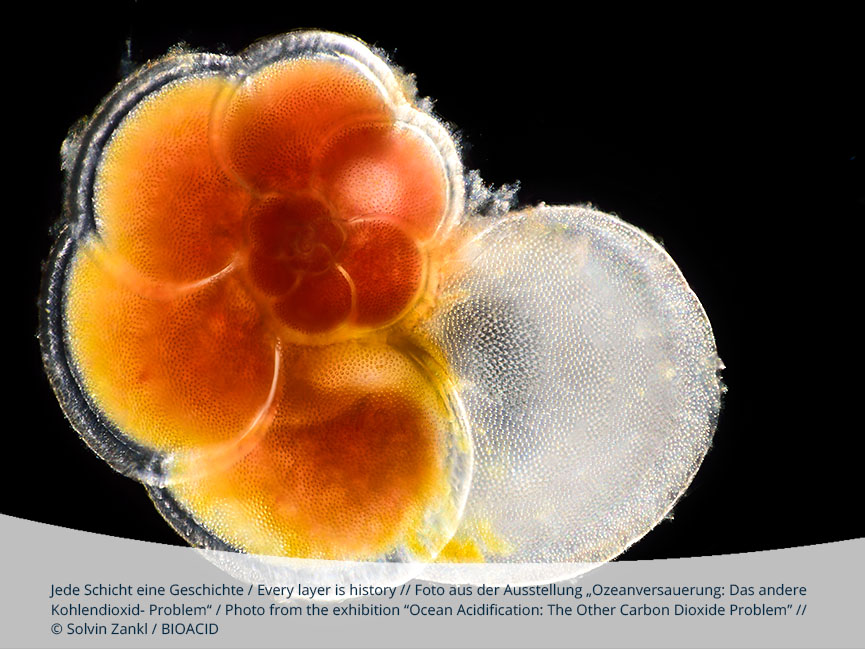How much a single-cell organism can tell about our planet! During their lifetime, foraminifera form an ever-growing calcium carbonate shell. When the organisms die, those housings are preserved in sediments or rocks. Based on the oxygen isotopes or the ratio of calcium and magnesium in their shells, paleo-oceanographers reconstruct the climate of past geologic eras.
Planktonic species such as this organism from the seas off Cape Verde that is just a few hundred micrometres large, produce about a fifth of the ocean’s annual carbonate. Planktonic foraminifera are likely to find it harder to build their shells as ocean acidification increases. But an experiment with their benthic, ground-dwelling relatives revealed that those species are able to cope with elevated carbon dioxide concentrations, because they are nestled in the sediment.
Photo: Solvin Zankl
